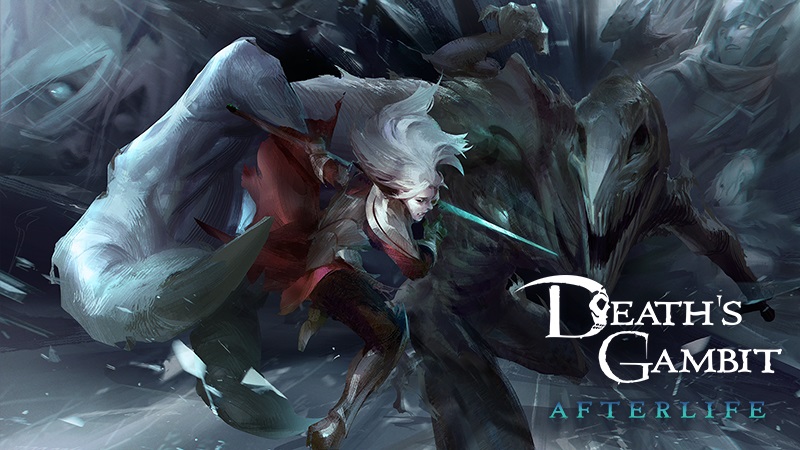
When there are so many indie “soulslikes” being released, making a fair Death’s Gambit: Afterlife review can be challenging. The sub genre is becoming more iterative and generic with everyone and their grandmother making a dark fantasy action-rpg with “souls” influences. How could any developer hope to establish themselves in an increasingly saturated market?
Death’s Gambit: Afterlife is a redux of the original Death’s Gambit from 2018. The game from 2018 was a worthwhile but highly flawed entry in the sub genre. Many aspects early on were poorly communicated to the player compounded with confusing and buggy gameplay tarnished any promise of enjoyable gameplay.
The developers took the criticism to heart and sought to address the flaws of Death’s Gambit and rebranded it as Death’s Gambit: Afterlife. Just how much does all the adjustments and tweaks enhance the experience? How does this “soulslike” stand out from the rest? Find out in the Death’s Gambit: Afterlife review!
Death’s Gambit: Afterlife
Developer: White Rabbit
Publisher: Serenity Forge
Platforms: Windows PC, Nintendo Switch (reviewed)
Release Date: September 30, 2021
Players: 1
Price: $19.99 USD
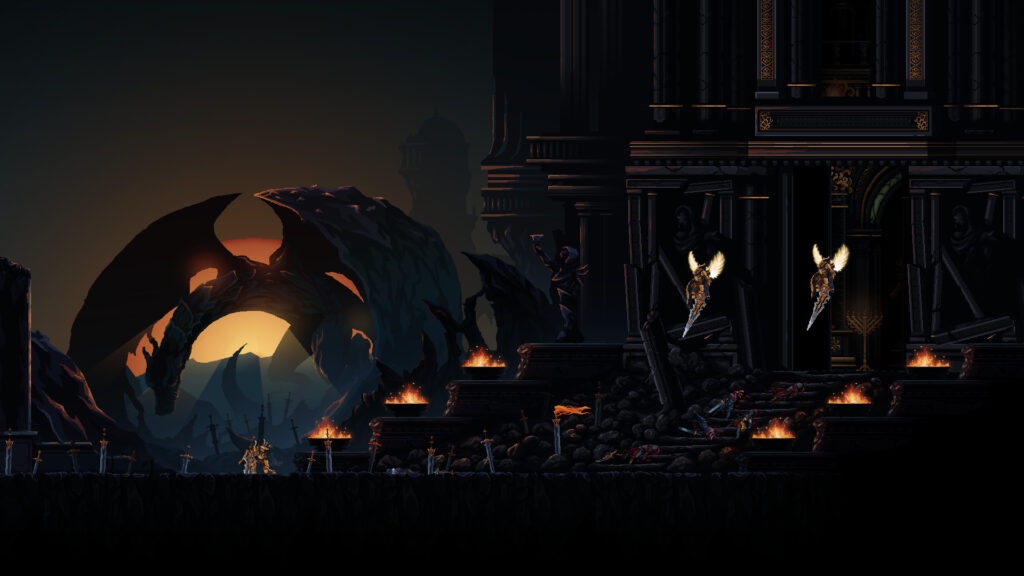
Sorun has a problem: he is a knight in the fantasy land of Vados and he is on a quest to destroy the source of immortality of the enemy of his people. The only thing is that Sorun cuts a deal with Death himself and is able to resurrect from the dead- a contract that can literally be broken by the player if they wish which activates a permadeath mode.
Sorun does not actually have any stake in the conflict with the lizard guys who fight his people. He is more interested in getting some payback for murder of his parents. At first the story is fairly conventional, but as things begin to unravel, Death’s Gambit: Afterlife proves there is more to it than it initially promises.
Death’s Gambit: Afterlife begins with Sorun as a standard silent avatar, but this does not last as some of the more meta aspects of the plot unfurl. To fully appreciate the depth of the story, player’s will feel compelled to replay and make a new build to experience some of the alternate possible endings.

What makes Death’s Gambit: Afterlife stand out from its contemporaries like Death’s Door or Noctis Aeternum is the range of freedom that players have at building Sorun’s play style. Much like in Fromsoftware’s “souls” games, Sorun’s stats are leveled up individually and function in a similar manner.
Players are encouraged to specialize in a play style since Sorun’s attributes need to meet specific requisites to equip certain kinds of weapons since stats also scale with equipment. This matters more than ever in Death’s Gambit: Afterlife than it did in the vanilla release due to the enhanced combat and fluid playability.
There are a lot of ways to build Sorun and all of them prove to be a legitimate and substantial way to play. Be it magic, ranged or any of the various melee styles; players will be able to mix and match styles to whatever suits them.
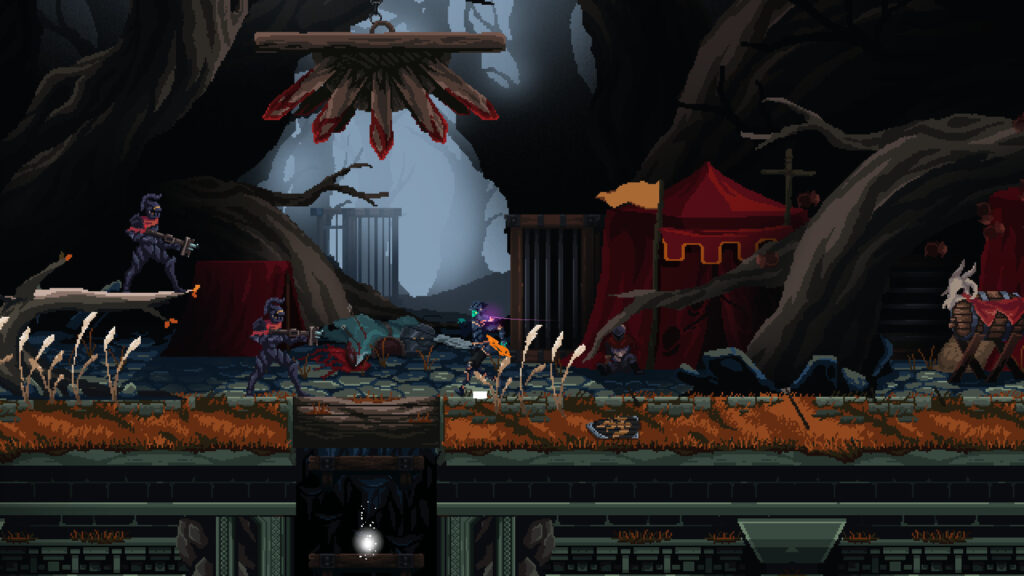
There are always combinations that work better than others. Thankfully, Death’s Gambit: Afterlife now gives players information on how to best utilize each class and suggests which stats to focus on. No matter what, it is always a choice and gamers won’t ever be locked into any commitments; there is always flexibility to mix things up.
When engaging in combat, Sorun controls with a palpable weightiness and deliberate speed that feels grounded. Details like the draw speed of the bow demands players be considerate of their ranged attacks, compounded with being mindful of their stamina consumption.
When fighting the many bosses, players must temper the urge to excessively slash with a scythe or spear. A critical pillar of battling is blocking or taking evasive action. Having enough stamina to avoid some of the devastating attacks in 2D is not that different than in 3D counterparts; getting a feel for the i-frames is key.
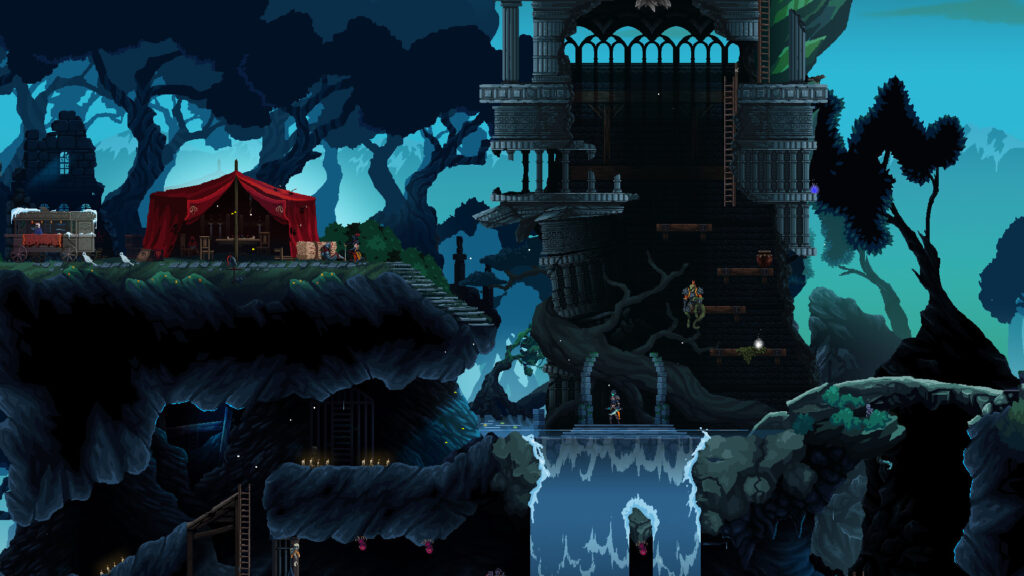
Platforming is involving and is incorporated to keep action interesting. Many encounters will be vertical and guide players to wrap around back to familiar locations for easy backtracking without having to turn around and retrace their steps.
Death’s Gambit: Afterlife offers a very large open-ended 2D world and it always looks impressive. The background art assets are impressively rendered and are carefully prioritized so that they don’t get too busy where characters could get lost. Atmosphere is consistent with an air of melancholy and battle worn weariness.
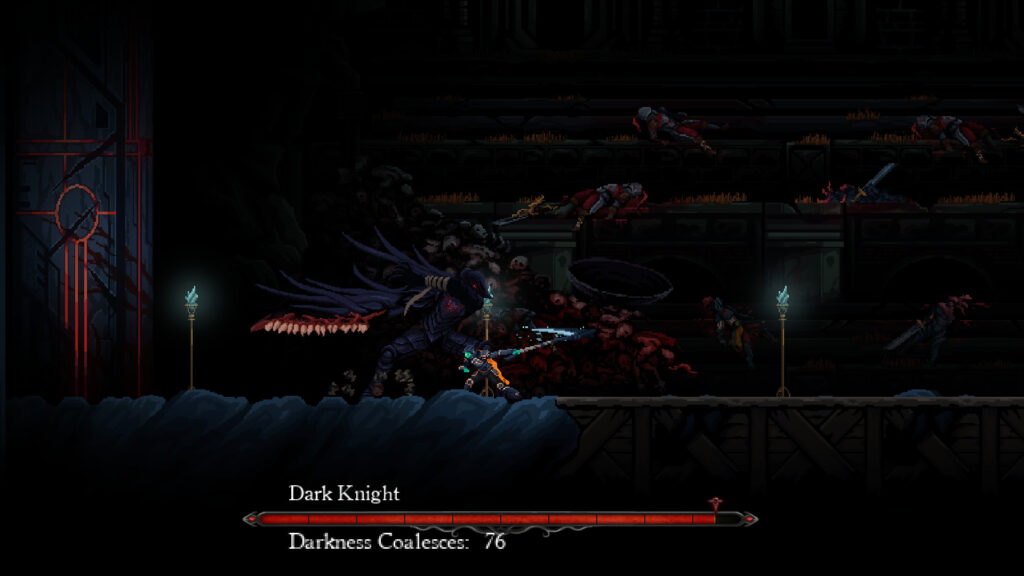
Most of the time, Death’s Gambit: Afterlife is picturesque with its framing and composition. There is always some graphic element to how architecture or natural structures fill the screen. Color and temperature is also vibrant and runs a wide gamut through out the quest.
Death’s Gambit: Afterlife is a very polished and refined 2D “soulslike” metroidvania. It does nothing new and its best qualities are its production design and how it cleverly contextualizes the gameplay mechanics and lore. Despite not offering anything fresh, this is still a reliable and worthwhile entry in this sub genre.
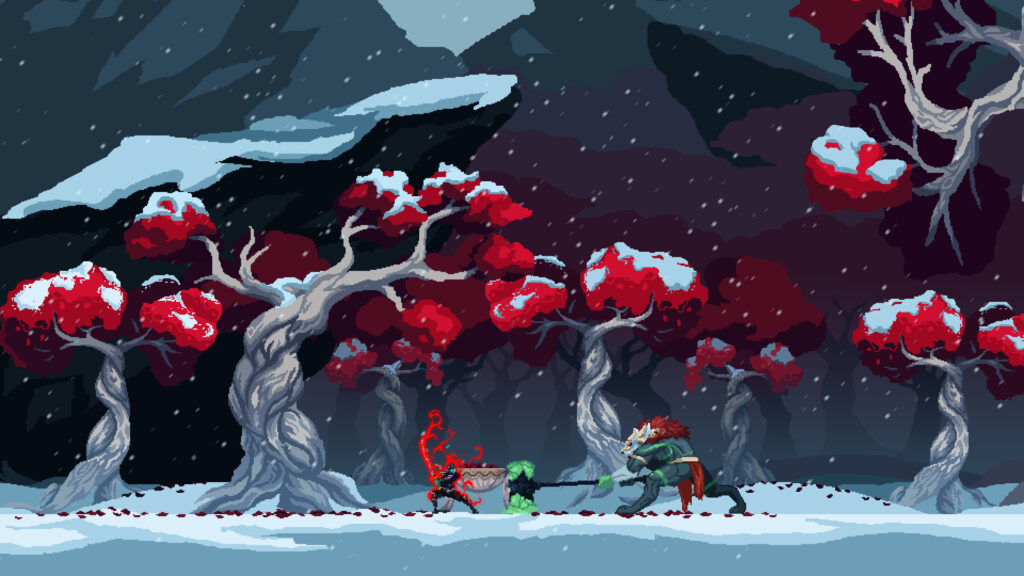
There are many games out there that offer a similar experience as Death’s Gambit: Afterlife. The setting and premise are standard for the genre, but it is still one of the better examples of its ilk and a lot of it has to do with the range of gameplay possibilities and the consistently excellent the boss battles.
At worst, Death’s Gambit: Afterlife is derivative and is getting by thanks to the successes of its contemporaries. Thankfully, the time spent enhancing the vanilla game and rebranding it has paid off. The developers took a flawed and rough around the edges 2D action platformer and made it the very best it could possibly be.
Death’s Gambit: Afterlife was reviewed on Nintendo Switch using a copy provided by Serenity Forge. You can find additional information about Niche Gamer’s review/ethics policy here. Death’s Gambit: Afterlife is now available for Windows PC (via Steam), Nintendo Switch, Xbox One, Xbox Series X|S and PlayStation 4.